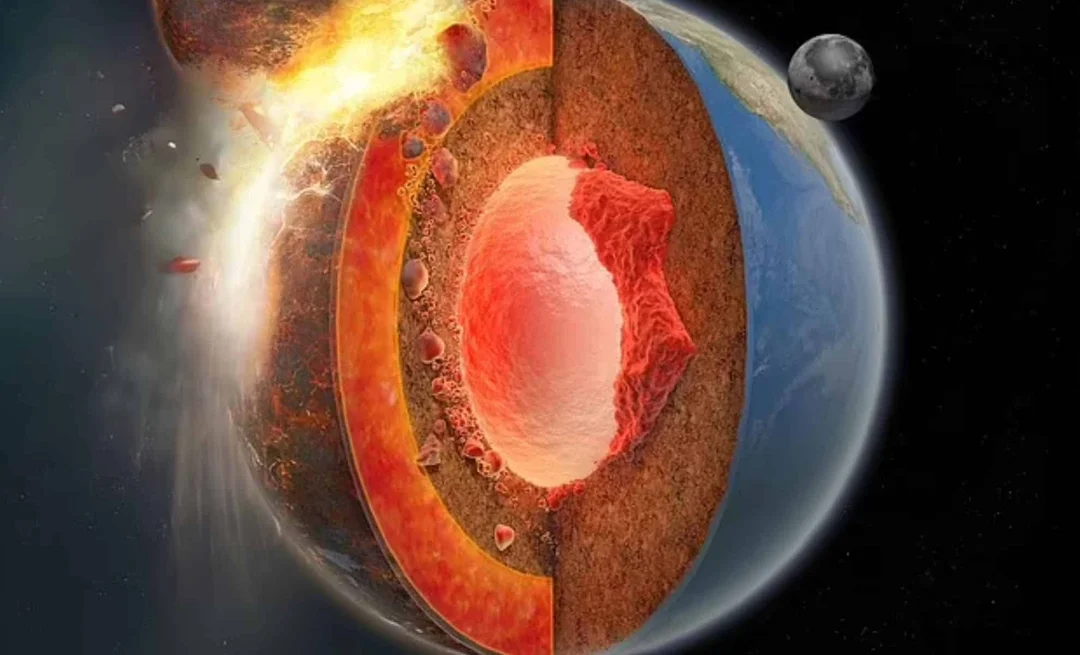
Lost Planet Found Inside Earth? Scientists Discover Remains of Theia Deep Within Mantle
In a groundbreaking discovery, scientists have uncovered compelling evidence suggesting that remnants of an ancient planetary body, Theia, may be buried deep within Earth's mantle. This lost world supposedly crashed into Earth billions of years ago, a cataclysmic event widely believed to have led to the formation of the Moon. The new research, published in Nature, focuses on two massive, dense structures known as Large Low-Velocity Provinces (LLVPs) located beneath Africa and the Pacific Ocean.
These LLVPs have long puzzled researchers due to their unusual seismic properties. Seismic waves slow down when passing through them, suggesting a unique composition different from the surrounding mantle. For decades, theories ranged from ancient subducted tectonic plates to primordial material. Now, a radical new hypothesis proposes that these enigmatic zones are, in fact, fragments of Theia’s iron-rich mantle.
The giant-impact hypothesis posits that Theia, a Mars-sized planet, collided with the early Earth approximately 4.5 billion years ago. This colossal impact ejected debris that eventually coalesced into the Moon, fundamentally reshaping Earth's structure. The fate of Theia's mantle material, however, has remained a mystery until now.
Advanced simulations led by Caltech researchers, including Qian Yuan, have shed light on this mystery. These simulations model the giant-impact event and the subsequent distribution of Theia’s mantle material. The models suggest that Theia's denser, iron-rich fragments were shielded by the cooler lower mantle, allowing them to sink and accumulate near the core-mantle boundary. This contrasts with previous assumptions that Theia's material would disperse uniformly.
The discovery has profound implications for understanding Earth's internal composition and planetary evolution. Identifying LLVPs as relics of Theia's mantle may influence mantle convection patterns, impacting tectonic plate movements and the generation of Earth's magnetic field. Moreover, it suggests that other terrestrial planets and moons, which also experienced giant impacts, may harbor similar hidden structures.
As one scientist noted, "It’s a radical idea, but it fits the data surprisingly well." The research team believes that iron-rich material from Theia's mantle could explain the density differential of LLVPs. If this proves true, Earth has been carrying a piece of a vanished planet deep inside it for billions of years.
This research also suggests a reevaluation of the role of LLVPs in Earth’s geodynamic history. If these structures are indeed ancient relics of Theia, they could have influenced processes like plate tectonics, the rise of continents, and even the planet’s magnetic field. The study invites further exploration into how these deep-mantle structures have shaped Earth’s evolution over billions of years.
The discovery of Theia's remnants within Earth's mantle represents a significant leap in unraveling the mysteries of our planet's early history. It demonstrates how violent cosmic events can leave lasting impressions on planetary interiors.
What are your thoughts on this groundbreaking discovery? Do you think this reinforces the giant-impact theory, or does it open more questions about Earth's evolution? Share your views in the comments below!